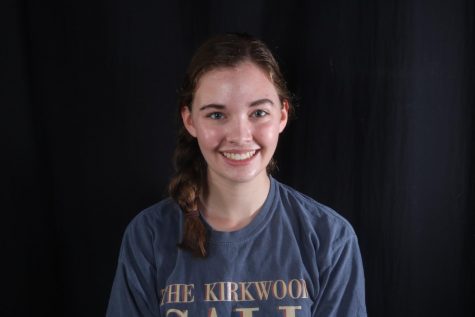In-class cinema

photo courtesy of Google under the Creative Commons license
As students walk into his freshman world history class, Frank Parini, social studies teacher, dims the lights and prepares to play the movie Tiananmen Square. As 19 pairs of eyes focus on the film, Parini notices the few who do not. One boy dozes off while his friend plays Fortnite underneath his desk. A girl at another table averts her eyes from the film ever so often, stealing glances at her crush. Everyone else attentively watches, occasionally taking notes. To them, watching movies in class is a positive learning experience. Jack Overall, junior, would also rather watch a movie. To Overall, movies broaden his knowledge of the subject.
“My history teacher, Mr. Evans, will show us clips of documentaries.” Overall said. “[Then] he will give us questions based off of those clips.”
Lydia Sheehan, freshman, also prefers watching parts of movies. In her English class, Sheehan is reading To Kill a Mockingbird and watching parts of the movie that correspond to the chapters she read.
“We watched [To Kill a Mockingbird] in little bits.” Sheehan said. “We would watch a chunk one day, then we would read, and then we would watch another chunk another day. [Breaking the movie into chunks] is a good way to [watch, because] it makes sure that you actually finish reading the book before you see the whole movie.”
However, movie-watching experiences sometimes hinder learning, according to Overall. In scenarios like these, traditional classwork like worksheets or projects may better benefit students.
“[Let’s] say I’m in German class, and we’re watching some random movie that we can’t understand.” Overall said. “We could be doing work and learning vocabulary.”
For Henry Reinert, freshman, one movie has stood out in particular: Romeo and Juliet. This version takes place in present day, yet the characters follow the original script, which gives Reinert mixed feelings about the film.
“Some of the [movies] we’ve watched this year have helped explain the subtopic or showed the bigger picture a little bit better.” Reinert said. “It’s nice to be able to see what’s happening [in Romeo and Juliet], because it’s a complicated story. [However, the] actual Shakespearean story and the movie are nothing alike.”
Although English classes like Sheehan’s and Reinert’s often watch films based on books read in class, social studies classes seem to show the most movies, according to Parini. In addition, social sciences like sociology and psychology are subjects where teachers play movies frequently.
“Sociology just has so many snippets and so many aspects of culture.” Parini said. “Same with psychology [because] there are so many different experiments and so many clips that drive home the point that you’re looking for.”
For the most part, KHS student and teachers appreciate how film forwards learning. Students like Overall, Sheehan and Reinert enjoy having a visual representation of what they normally see in the form of packets and presentations, and teachers like Parini who hear this feedback can better understand how their students learn.
“I think [pieces of movies] are very educational.” Parini said. “Some kids really learn on a visual level, and it can really put together [a] narrative.”
Your donation will support the student journalists of Kirkwood High School. Your contribution will allow us to purchase equipment and cover our annual website hosting costs.

Interests: Photography/editing photos, graphic design, reading, and spending time outdoors.
Favorite musical artist: Shawn Mendes.
Favorite quote:...


